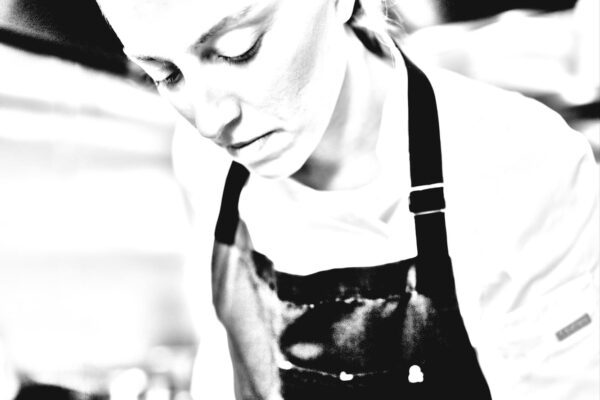Sophisticated Peasant Food
Coq au Vin brings the flavors of France home.
Words by Kayla & Justin Butts Photos By Rachel Benavides
Though it’s peasant food, Coq au vin certainly sounds elegant to say in French. Still, for centuries this dish has been the food of the working class.
Coq au vin, which is French for “rooster in wine,” has been around for a couple thousand years. Legend tells that the defeated Gauls served coq au vin to Julius Caesar when he conquered France for Rome. They say the emperor Napoleon ate coq au vin as a last resort when there was nothing else to be had.
This dish was the food of the poor because old retired laying hens, roosters in particular, are such tough and stringy birds that they must be braised for hours to tenderize the meat. The other ingredients—onions, garlic, carrots, potatoes, and basic herbs—are the staples of a working class garden. The birds can be tough, yes, but they are very flavorful.
Coq au vin got an elegant makeover in the mid-20th century when trendsetting French chef Paul Bocuse developed a new coq au vin recipe for his landmark restaurant in Lyon. Bocuse influenced chefs around the world to experiment with chicken in wine preparations.
But it was the legendary Julia Child who put coq au vin on the international food map when she cooked it on her television show in the 1960s. Her dish became an instant classic. Child introduced French cuisine to the home chef in America and made it accessible to everyone.
Of course, a modern coq au vin presentation will be different than the Old World version, because modern chickens are so different. No chef today would use an old laying hen, and especially not a rooster, for this dish. Heritage chicken breeds have been abandoned in favor of a new hybrid chicken called the Cornish Rock Cross which has very tender meat.
As Chef Child or Chef Bocuse would say, the quality of chicken and wine determines the quality of this dish. For the best coq au vin, the chicken should be sourced from a local farm. And just as important, this dish is only as good as the wine used to cook it. For extraordinary coq au vin, don’t skimp on the wine.
This dish also calls for fresh pork belly and homemade chicken stock. All these wholesome ingredients, plus the chicken and the freshly- picked vegetables, can be found at any of the local farmers’ markets or farms.
Coq Au Vin
Inactive prep time: 8 hours
Prep time: 20 minutes
Cook Time: 1 hour 30 minutes
Ingredients:
¼ c. salt
1 whole chicken (about 4lbs), cut into 8 pieces
1 lb. thick-cut bacon (preferably uncured) or pancetta, diced
Salt and freshly ground pepper
2 shallots, diced
5 carrots, peeled and cut into thirds
4 Yukon gold potatoes, cut into chunks
3 cloves garlic, minced
4 T. butter
1½ T. all-purpose flour
2 c. homemade chicken stock
1½ c. Pinot Noir or Burgundy
½ c. sliced mushrooms
8 sprigs thyme
½ c. chopped parsley
Directions:
In a large pot, dissolve salt in as much water as necessary to immerse the chicken pieces (about 4 cups). Cover and leave in refrigerator overnight.
The following day, remove the chicken from the salt water, rinse it with cool running water, and pat dry with paper towels. Season with black pepper.
Heat a 5qt cast iron Dutch oven over medium heat. Add bacon or pancetta and cook until slightly crisp, about 3 minutes on each side. Remove bacon and set aside. Season chicken with pepper and cook for 7 minutes on each side. Work in batches if necessary, but be careful not to overcrowd. Add vegetables into the pot and cook for 3 minutes, stirring occasionally.
Throw in butter to the pot and heat until it melts. Add flour and stir until it thickens and begins to turn brown. Add chicken stock, wine, thyme, salt and pepper, and stir until this roux is dispersed throughout. Cook on medium-low for an additional 30 minutes or until juice of chicken runs clear and there are no traces of pink in the pieces of dark meat. Sprinkle fresh parsley over finished dish.
Native Knowledge
Brine the chicken in salt water to achieve the most tender meat. Or, as an alternative, marinate the chicken in wine overnight. The chicken will take on a deep maroon color and have a powerful wine flavor. It’s important to use a high-quality wine.
Flavors of this dish continue to develop with age, so it’s best to make it the day before dinner with friends and reheat just prior to serving.
In Old World coq au vin, the comb, feet, and kidneys were used to flavor the dish. Blood was also added to thicken the sauce.














